Reviews

SRI LANKA: Crime - Something no one wants to touch
SRI LANKA: Crime - Something no one wants to touch
By Basil Fernando
One of the things that the Sri Lankan State as well as the Civil Society itself has given up on- is the control of crime. Crime has spread into everything and continues to spread further and further. However, we see that the more crime spreads, the less amenable it is for us to look into the issues and correct them.
One of the greatest crimes spreading like a cancer in Sri Lankan society today is Extortion. Extortion has spread into everything, in practice crippling every sort of economic activity, especially at the grass roots level. Running a small shop or starting a small business will be confronted with demands from extortionists. The small profits that could be made out of these businesses are not enough to meet the demands. Even a big business like the transporting of people is rife with demands from all sides. They threaten dire consequences if their requests are denied. These demands come from highly organized groups with no way of escaping their tentacles. As extortion became widespread, every group that exercised any power, became deeply involved. They focused on getting hold of their own personal share of money from such businesses. Local Police Officers, local Politicians and Bureaucrats, ALL got their share. With that kind of ambience, pro-active, preventative efforts against such crimes became less frequent.
Of course, EXTORTION is not the only crime taking place in Sri Lanka. The drug business has also spread seriously among the population. Even the people who exercise moral authority in society no longer take much interest in fighting these evils. The nature of these crimes is usually seen in a country where there is massive unemployment and poverty. It is easy to find people to become agents of such crimes. Once a section of the poor gets a taste for this crime, as a way of sometimes making money, bad things ensue. The whole situation gets so embedded in Society that it is almost impossible to find ways to fight against it. When the poor are devoid of opportunities to make a living, it does not take long for some to decide that taking risks with crime is perhaps the most convenient way open to them. Changes come in the social consciousness of the poorest sections of society. And when that happens, there are few means to deal with such a situation. As people experience being in and out of the Courts or in prison themselves, the type of change that take place within them is beyond anyone’s expression and imagination. This is HOW crime has found its way into Sri Lankan Society.
When a problem becomes too complex, attitudes tend to adjust. Officers who are supposed to deal with difficulties go through various changes in their own approaches. They take the view that if something cannot be resolved easily, just allow it to drag on. In that way, they can avoid more confrontational approaches being taken against the evildoers. They can avoid the consequences of such confrontations. They can also try to escape the blame that comes from society by attributing the delays to external factors beyond their control. The more problems like this drag on, a climate is created which encourages criminals. They know that they do not have many formidable obstacles to face when engaging in crime. Thus, we see in the Courts, in the Prosecutor’s Office as well as in the Police Stations, the development of numerous solutions to let things go dragging on as usual.
In such circumstances, other crimes, which involve greater degrees of direct violence, take place with impunity. Murder, rape, sexual abuse, theft, robbery - all these things are increased manifold. General changes in the social atmosphere where resistance to crime is virtually non-existent, are utilized.
The consequences of the above examples are most dangerous. Cynical attitudes relating to crime develop. This particularly affects crimes relating to sexual abuse. Instead of being scandalized by such acts of violence, Society takes a rather cynical approach. It even begins to place blame on victims of crime. To some, especially the young, crime begins to appear as an adventure while social condemnation of crime becomes less and less.
Basil Fernando is a Sri Lankan jurist, author, poet and human rights activist.

NGOs should not be allowed to operate above the law - The Oxfam Scandal
NGOs should not be allowed to operate above the law - The Oxfam Scandal
by Sienna Merope-Synge
22 Feb 2018
The backlash against Oxfam continues to grow, but the scandal is just the tip of the iceberg of unaccountable "humanitarian" action in Haiti. In the wake of revelations that its staff solicited prostitutes in post-earthquake Haiti, Oxfam has pointed to an internal investigation that led to senior employees resigning or being fired, and released a new 10-point plan to eradicate sexual abuse. But what is striking is that the charity never treated its staff's abuses as a legal matter. Let's be clear: this behaviour wasn't just unacceptable, it was unlawful. Prostitution is illegal under Haitian law and if minors were involved, this was also statutory rape.
The behaviour also constituted illegal child prostitution under UK law, and British courts retain jurisdiction to prosecute. Yet Oxfam didn't report the conduct to Haitian authorities and none of its staff have faced criminal charges. Instead, senior workers were allowed to resign quietly. Several moved into jobs with other NGOs that put them in continued contact with vulnerable women and children.
I wish this was surprising, but as a lawyer working on abuses by humanitarian actors in Haiti, I have learned that accountability is the exception, not the norm. Any Haitian can tell you about the damage caused by those supposedly sent to help them: the missionaries who abuse children in orphanages, the UN peacekeepers who rape and sexually exploit Haitian women and children, almost invariably with no consequences. Nor is this confined to sexual abuse.
The post-earthquake response in Haiti was a showcase in accountability failures, exemplified by the American Red Cross "losing" $500m intended for post-earthquake housing. The UN still refuses to pay compensation to the more than 10,000 Haitians who have died from the cholera epidemic its peacekeepers started by recklessly disposing of contaminated waste.
There is a common thread that enables these abuses. The UN and international NGOs like Oxfam operate in Haiti as if the law did not apply to them. If charity workers were found to have sexually abused children in the UK, or the UN recklessly caused the death of thousands of people in New York, there would be court cases, jail time, damages awards. But in Haiti, these same behaviours are treated as internal disciplinary matters, or organisations respond with new policy standards, while skipping over accountability altogether.
It's not that legal obligations don't exist in Haiti, it's that humanitarian organisations simply ignore them. Ironically, Oxfam is usually one of the better NGOs when it comes to accountability to the people it serves. It was one of the original groups involved in the Sphere project, which established minimum standards for international humanitarian responders, and has consistently supported treating aid recipients as rights holders. Yet Oxfam leadership justified its failure to refer abuses to Haitian authorities on the grounds it was "extremely unlikely action would be taken" - a self-fulfilling prophecy if ever there was one.
Where does this disdain for the law come from? In my experience, from a set of often unspoken, but commonly held beliefs in the humanitarian sector: that Haiti is a place where messed up things happen all the time, and so are somehow less serious than if they occurred elsewhere. That UN and NGO personnel are experts who ultimately know better than national actors what is best. Perhaps most pervasively, that humanitarian organisations are serving a greater good that justifies a certain amount of collateral damage to protect the organisation - even when it's measured in people's lives. That is how Oxfam comes to cover up a sex scandal to protect the charity's reputation, or how the UN justifies refusing to pay compensation to cholera victims because financial liability might discourage future peacekeeping efforts. We should also be honest here: these attitudes would not exist if Haitians were white.
The impunity rife in the humanitarian sector not only breeds abuse, it undermines the effectiveness of international work. The UN has spent hundreds of millions of dollars in Haiti to promote human rights and the rule of law, yet its efforts are seen as a hypocritical farce by many Haitians. Oxfam will spend years rebuilding its reputation, and may never regain trust in Haiti.
To Oxfam's credit, it's new sexual abuse plan includes a commitment to proactively working with local authorities, and it says it has now shared the names of the men involved in the sex scandal with the Haitian government. This probably comes seven years too late for the women affected, but if the commitment is taken seriously - a big if - it could contain the seeds of long overdue change. Humanitarian organisations will never truly help Haiti, or any other country, unless they are willing to treat the people they claim to serve as equals. That means respecting their legal rights, including their right to accountability when those rights are violated. It's time to hold these organisations and their staff to the law.
Source : Al Jazeera

New IRD Act will aim to achieve elusive taxation consistency
If the recently passed Inland Revenue Act is allowed to settle down and not changed every year, Sri Lanka will be able to achieve the required consistency in taxation, Duminda Hulangamuwa, Chairman of the Taxation Steering Committee of the Ceylon Chamber of Commerce said.If the recently passed Inland Revenue Act is allowed to settle down and not changed every year, Sri Lanka will be able to achieve the required consistency in taxation, Duminda Hulangamuwa, Chairman of the Taxation Steering Committee of the Ceylon Chamber of Commerce said.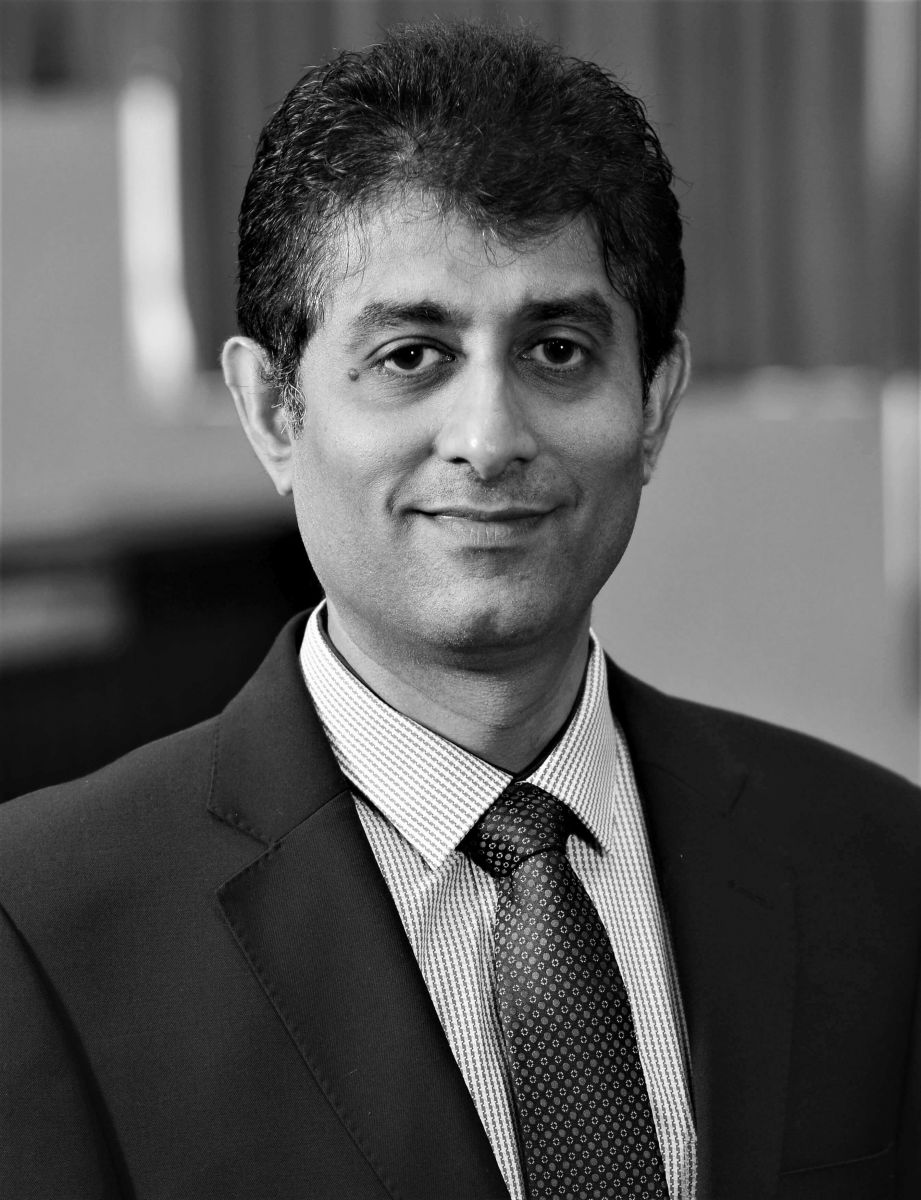
Duminda Hulangamuwa, Chairman of the Taxation Steering Committee of the Ceylon Chamber of Commerce
Over the years, successive governments failed to ensure the consistency of taxation due to arbitrary tax amendments. It was seen that major tax amendments were introduced mid 2017, including changes to the Value Added Tax (VAT). The inconsistency in terms of taxation not only adversely affected business planning, but also contributed significantly to the downgrade of Sri Lanka’s performance in the Ease of Doing Business index.
The New Inland Revenue Act which came into effect from April this year has introduced a three-tier system for income taxation (14%, 28% and 40%). Although certain tax experts and economists are hoping for a simplification of the taxation system, Hulangamuwa is of the view that simplifying tax laws is an over emphasized statement made too often.
“In my view any tax law is complicated and would remain so. When industries and economies grow complicated and fragmented, applying a uniform code becomes difficult, and a simple law today can develop into a complicated law later. As with everything else, the tax law will also evolve with the environment,” he said.
Commenting on the concerns raised by Chamber regarding the way in which export and agriculture industries were taxed through the new Inland Revenue Act, Hulangamuwa stated that concerns have been addressed to a certain degree.
"The answer is yes and no. According to the initial draft, these sectors would have been taxed at 14% only if the company engaged in export/agriculture had a revenue of 100% from export/agriculture. After our submissions and subsequent discussions, the requirement to qualify for the 14% tax rate was brought down to 80%. As per the law passed, if 80% of the gross earnings of a company is from exports, then the entire profit will be taxable at 14%. The same is true for agriculture, education, tourism and IT related functions,” he added further."
Courtesy Economy.lk
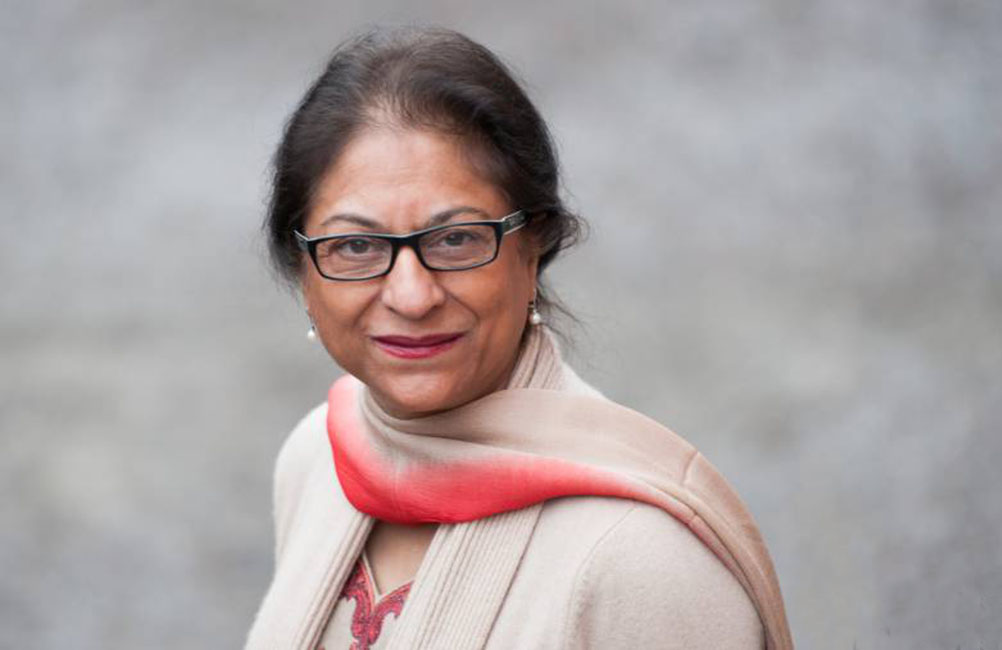
Asma Jahangir: bidding farewell to a feminist icon
Asma Jahangir: bidding farewell to a feminist icon
by Rabia Mehmood
15 Feb 2018
People don't usually break societal barriers and disrupt the patriarchal order at funerals anywhere in the world, let alone in Pakistan. But on February 13, many women in Lahore, including myself, did just that by actively participating in a janaza, a Muslim funeral ritual, for the first time.
On that day, contrary to orthodox funeral traditions observed in Pakistan, we not only stood alongside men, we actually stood in front of them. Also, there were hardly any frowns directed at women who chose not to cover their heads.
The funeral that turned into a poignant display of women's resistance in Pakistan was for Asma Jahangir, the country's leading human rights lawyer. Even in her transition, Asma was guiding Pakistanis who always looked up to her, showing them how it is done. Her funeral was a staggering manifestation of her legacy, a radical send-off befitting a feminist icon. It was subversive not only because thousands of men and women stood next to each other praying, but also because those men and women were Christians, Sikhs, Shia, Sunni and Ahmadi. In the southern city of Hyderabad, a group of women and men also said her funeral prayer, side by side, in absentia.
These gatherings were an expression of progressive solidarity which is normally not permitted in public spaces in Pakistan. Because unfortunately, we are a society where women can be killed for marrying out of choice, and the mentally unstable could be beaten to death by a mob in the name of religion. And the country's human rights community is embattled.
Since the news of Asma's sudden death on February 11, we have been asking ourselves: Now that she is gone, who will stand up for us? Who will have our backs when and if we are confronted with the disqualification of another democratically elected prime minister? Who will fight for the downtrodden?
At her funeral there were lawyers, young and old, breaking down in sorrow. There was a burqa-clad acid attack survivor sobbing in a corner, an old woman with tears spilling down her cheeks asking aloud: "who will help us now?" An activist, grieving: "our mother is gone". Father of peace activist Raza Khan, who was forcibly disappeared on December 2 last year, was also there. He looked lost when Asma's body was taken for burial because she was Khan's legal counsel. Christian groups were also at the funeral, carrying wreaths of roses because Asma was their defender.
Most of those who came to bid farewell had been touched by Asma's courage at some point in their lives. Asma's work in Pakistan and beyond is iconoclastic. She had been UN's Special Rapporteur on extrajudicial, summary or arbitrary executions, and on the freedom of religion or belief. At the time of her death, she was the Special Rapporteur on the situation of human rights in Iran. Over the decades, she took on military dictators, religious extremists and violent misogynists both in court and on the streets.
In Pakistan, human rights, and specifically women's rights are widely understood as a western concept introduced with the agenda of weakening local Islamic or cultural traditions. But this did not stop Asma from fighting for human rights within her own country.
Asma was one of the leaders of the Women's Action Forum (WAF), which confronted General Zia-ul Haq's Hudood Ordinance, which discriminated against women and religious minorities. She was also one of the founders of the Human Rights Commission of Pakistan - these platforms are at the forefront of human rights work in Pakistan to this day.
I discovered who Asma was through newspapers in the mid-1990s when I was still in school. A woman by the name of Saima Waheed had sought help from the Lahore-based legal aid clinic AGHS, run by Asma and her brilliant sister Hina Jillani. Saima was fighting for her right to live with her husband, whom she had chosen to marry against her family's permission - an act violently opposed in Pakistan even today. Saima's case led to the historic Supreme Court ruling which legally allowed Pakistani women to choose a life partner without permission of a guardian.
AGHS and its sister shelter for women, Dastak, provided safe havens for thousands of women over the years. All these women, regardless of class and creed, received help for divorces, child custody or inheritance. AGHS and Dastak provided them with an escape from domestic violence. Impoverished women and children languishing in prisons have had their detentions reduced because AGHS paid their bail bonds.
Asma has been an inspiration for innumerable women who wanted to be lawyers, human rights defenders or simply active, empowered citizens of Pakistan. She led the way for thousands of Pakistanis who want political change. Many human rights victories in Pakistan and beyond were only possible because of her courage and determination. I believe, as Pakistani women, we understand our rights and aspire to make things better because of her and the questions she kept on asking.
She may be gone, but her legacy will live on in each and every one of us.
Source : Al Jazeera
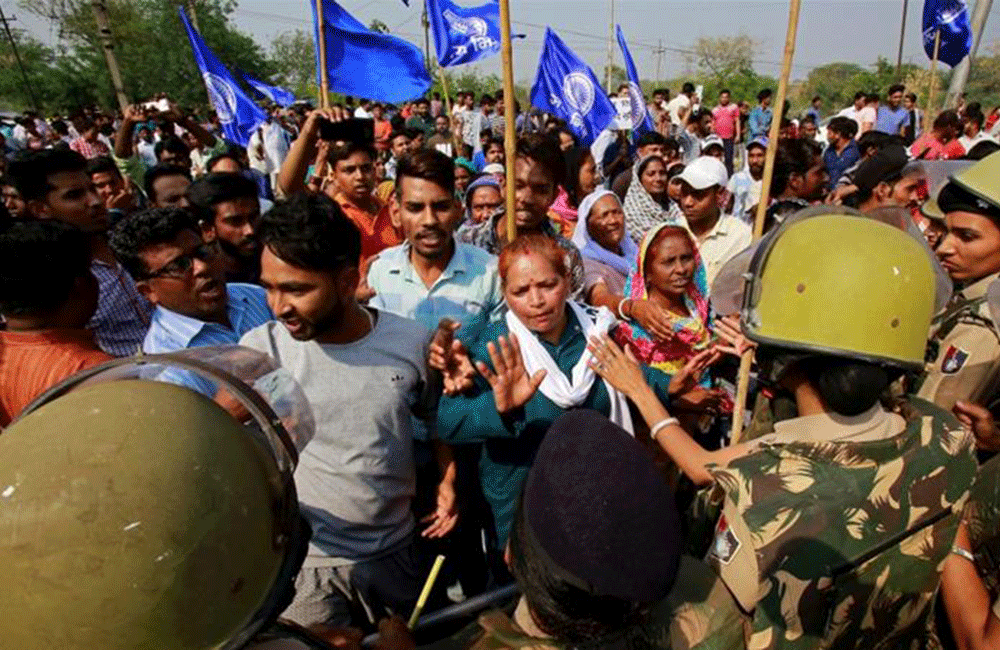
A 'Dalit Spring' is on the horizon
A 'Dalit Spring' is on the horizon
by Kancha Ilaiah Shepherd
8 Apr 2018
On April 2, hundreds of thousands of India's Dalits poured into the streets to take part in the Bharat Bandh, or all-India strike, called by Dalit organisations across the country. The former "untouchables" were protesting against what they say is the dilution of a law meant to protect them. The mass protest, which was the first of its kind, was mostly peaceful - protesters blocked roads, participated in sit-ins and chanted slogans. But government forces and other right-wing groups were there to silence this Dalit resistance cry. They opened fire on the demonstrators. At least 11 people, most of them believed to be from the Dalit community, were killed.
The Bharat Bandh was a turning point in India's caste struggles. But to fully understand the significance of this mass protest - and the reasons why India's Dalits finally decided to take to the streets - it is necessary to analyse the current Indian government's aggressive policies and deep-seated hostile attitudes towards this underprivileged group.
Trying to preserve the caste system
The Scheduled Castes (SC) and Scheduled Tribes (ST) together constitute more than 20 percent of India's population - approximately 250 million people. As the most underprivileged group in the country, they have long been the target of hate crimes and discrimination in India, but their situation got only worse after the Bharatiya Janatha Party (BJP) came to power.
The BJP is an off-shoot of the Hindu fundamentalist organisation, Rashtriya Swayamsevak Sangh (RSS). The RSS's ultimate aim is to transform India into a conservative Hindu state, in which all traditions of Hinduism, including the caste system and untouchability, are preserved. Although they do not say this openly, they are against any form of social mobility and reform in the country.
They work to protect the rights and privileges of the Brahmins (the priestly caste), the Banias (the business caste) and the Kshatriyas (the warrior caste). They also work aggressively to "protect" cows - the animal that is revered as sacred by Hindus. But they are mostly silent when it comes to the abuses the Shudras (the working class), the Dalits (the scheduled castes) and the Adivasis (the scheduled tribes) face in India.
Diluting reservations
The Dalits are scared that the BJP and the RSS are trying to dilute the system of reservations in India - an affirmative action programme guaranteeing scheduled castes and tribes reserved places in educational institutions, government jobs and even seats in parliament and the state assemblies. These reservations or quotas are justified as a means of making up for millennia of discrimination based on birth.
Over the years, this system helped underprivileged communities in India to get back on their feet and claim their rightful place in the Indian society. Reservations even allowed the emergence of a small Dalit middle class. But today, some members of the "upper" castes are extremely resentful about the reservations system and the success of this Dalit middle class.
The dilution of reservation provisions in every institution has already started. The RSS and the BJP are seemingly working to set back any progress underprivileged communities achieved through this affirmative action programme. The leader of the RSS, Mohan Bhagwat, who is a Saraswat Brahmin from Maharastra, has been consistently talking against reservations.
No visible Dalit has been appointed to a decision-making role in any big governmental institution in recent years. Also, Dalit students are facing a negative atmosphere in universities. The Akhila Bharatiya Vidyarthi Parishad (The student wing of the RSS), mainly headed by casteist upper-caste youth, attacks Dalit students and questions their place in India's universities on a regular basis.
All this is happening because the BJP/RSS is against social transformation in India. They want the caste system, which classifies Dalits as "untouchables", to stay intact. They do not want the Dalit middle class to prosper and challenge their supremacy. Their policies directly oppose the ideals of India's democratic constitution.
But the dilution of the reservations system is not the only tool they use to set the Dalit progress back and maintain the social inequalities in India.
Cow protection laws
Strict implementation of cow protection laws across India has been another priority for the BJP government since it came to power in 2014. This caused alarm among Dalits and Adivasis, as they are the main beneficiaries of the cattle economy in the country.
This policy also triggered violence against Dalits, Adivasis and other communities that participate in the cattle industry across India. Hindu vigilantes started attacking people who they accused of slaughtering cows. According to the Human Rights Watch, there were at least 38 attacks against members of underprivileged communities over the trade or slaughter of cows for beef in 2017. At least 10 people were killed.
In 2016, the state of Gujarat and other parts of India were rocked by protests after four Dalit men in the city of Una were tied to a car, stripped and flogged by Hindu vigilantes, who accused them of skinning a cow.
In many cow-related attacks like the one in Una, the 1989 SC/ST Prevention of Atrocities Act was used to bring perpetrators to justice. Under the act, passed by the government of former Prime Minister Rajiv Gandhi in 1989, anyone accused of committing an atrocity against the members of the scheduled castes and tribes is denied bail.
Over the years, this act became a big problem for casteist forces in India who want to maintain the oppression of Dalits and other underprivileged communities. The RSS has been training its cadre for decades to oppose any form of social change and suppress any attempts to create a caste-free India, often through violence and intimidation. To continue with their agenda, they needed a mechanism to weaken the Atrocities Act and ensure the Hindu "vigilantes" who attack Dalits would not face imprisonment.
On March 20, the Supreme Court of India gave these group what they wanted by passing a verdict which barred the immediate arrest of those accused of violence against SCs and STs.
This was the last straw that broke the camel's back for many Dalits. Dalit intellectuals and activists saw this judgement as what it is: a major blow to Dalit rights and progress.
As a result, for the first time since India's independence 70 years ago, Dalits decided to take collective action.
Yet when they took to the streets to fight for their rights on April 2, the dominant forces in India responded with violence. Protesters were beaten and shot at. A local BJP worker named Raja Chaunan was filmed as he fired his gun on protesters.
But even though the protest was violently suppressed, all was not lost. This collective act of resistance showed the governing forces that Dalits are not going to silently take the abuses and discrimination any longer.
The middle class that emerged out of this historically oppressed untouchable community is now capable of understanding every step their oppressors take. And they are ready to take action.
A section of Dalits voted for the BJP in the past, because they believed that Narendra Modi, who has an OBC background himself, could improve their socioeconomic and educational conditions. But Modi has no grip over his party and the RSS and the core RSS and BJP supporters across India view the caste system as an undisputable pillar of a Hindu society. Neither organisation has ever produced literature openly opposing the caste system.
All Dalits now see the BJP government as what it is: An RSS offshoot determined to keep them from achieving real equality. And they are ready to resist its attempts to strip them of their hard-earned rights.
The Dalit forces are no longer willing to take the abuse, oppression and discrimination lying down. The way the Dalit masses came into the streets across India, waving the dark blue flags of Dalit resistance, made it clear for everyone that a "Dalit Spring" is on the horizon.
Source : Al Jazeera
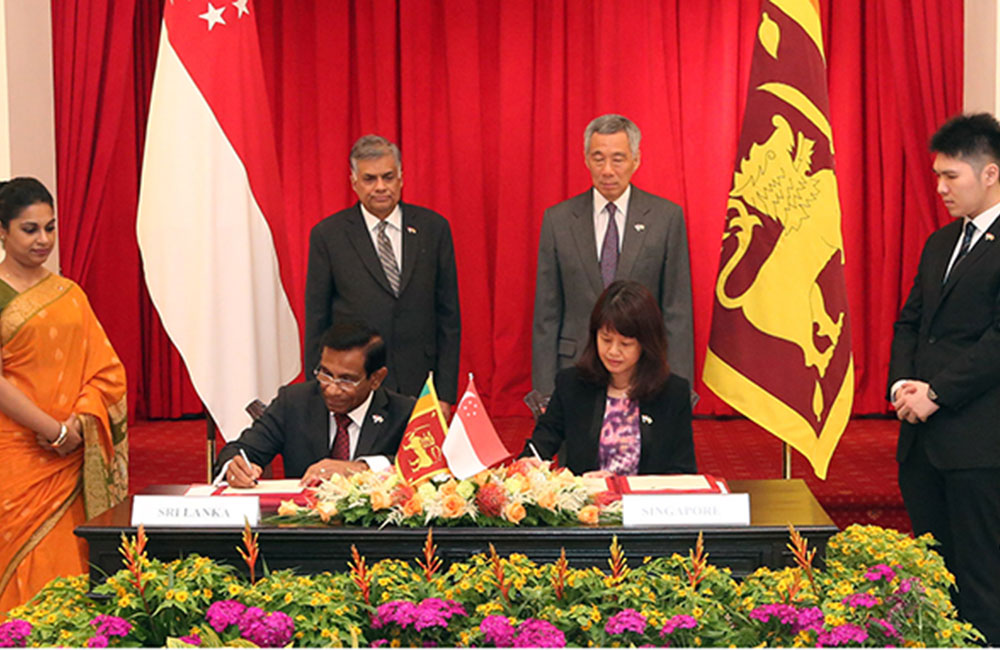
Is Singapore Sri Lanka’s door to East Asia?
Is Singapore Sri Lanka’s door to East Asia?
By Ganeshan Wignaraja and Divya Hundlani
In a bid to strengthen economic relations, Sri Lanka and Singapore signed a bilateral free trade agreement on 23 January 2018. In spite of the two islands’ decades of warm diplomatic relations, Singapore comprised only 1.1 per cent of Sri Lanka’s exports and 5.3 per cent of imports in 2016.
PIC singapore
The agreement underlines Singapore’s serious search for trade and investment partners beyond East Asia, and it shows Singapore’s recognition of Sri Lanka’s potential as a trading hub in the fast-growing Indian Ocean region. The agreement is also an outcome of Sri Lanka’s post-conflict trade policy to boost flagging growth and to strengthen ties with East Asia.
This is Sri Lanka’s first free trade agreement since 2005 and the most comprehensive among its handful thereof. It covers goods, services, investments, trade facilitation, intellectual property rights and government procurement.
Market access to Singapore was not a problem for Sri Lanka even before the agreement. Singapore is one of the world’s most open economies: 99 per cent of all imported goods enter duty-free and there are few banned imports.
Meanwhile Sri Lanka will eliminate tariffs on 80 per cent of goods over 15 years under the agreement, which is a relatively long adjustment period. The free trade agreement will likely benefit Sri Lanka through cheaper consumer goods and inputs, foreign direct investment (FDI) and competition. But the two countries should address a number of crucial areas in order to maximise the benefits flowing to Sri Lanka.
Singapore, who will be the 2018 ASEAN chair, should support Sri Lanka’s eventual participation in the Regional Comprehensive Economic Partnership (RCEP). RCEP promises to be the world’s largest free trade agreement: the 16 participating countries represent 31 per cent of global GDP, and among their numbers are the 10 ASEAN nations, China, India and Japan. Joining RCEP offers Sri Lanka the prize of simultaneous access to an enormous regional market and dynamic Asian FDI. Participating in RCEP is also arguably simpler for and less draining on Sri Lanka’s scarce negotiating capacity than separately negotiating 16 bilateral free trade agreements.
Sri Lanka is already a member of the ASEAN Regional Forum, but the Forum’s main purpose is discussion on security issues, not on economic ones. Attaining ASEAN observer status is an imperative next step to Sri Lanka’s joining RCEP.
Increasing Singaporean FDI to Sri Lanka is also a priority: only 5.3 per cent of Sri Lanka’s FDI during 2014–17 came from Singapore. The investment climate has improved for Singaporean firms: the free trade agreement rightly includes safeguards against expropriation of and discrimination against Singaporean investments, Singaporean firms can bid for large government procurement projects in Sri Lanka and Sri Lanka’s Board of Investment is targeting Singaporean FDI in infrastructure, IT services, tourism and education.
Despite these improvements, Sri Lanka’s investment climate remains challenging. Opening a business in Sri Lanka in 2017 takes an average of nine days, compared to 2.5 days in Singapore. Streamlining redundant colonial-era business regulations and demonstrating consistency in economic policy would help gain the confidence of risk-averse Singaporean investors.
Sri Lanka should additionally seek Singaporean expertise on sustainable FDI-led development. Singapore’s Economic Development Board (EDB) is famous for its network of well-staffed overseas offices of which the sole aim is to market Singapore as an investment destination. Tapping into its expertise to restructure Sri Lanka’s Board of Investment is vital. The EDB could assist the Board of Investment to establish its first overseas office in Singapore, which would help the Board of Investment to step away from managing export-processing zones and instead to refocus its capacity on investment promotion. Sri Lanka could also harness the ‘know-how’ of Singaporean firms in climate-friendly urban planning and transport, export-processing zones and logistics services.
Sri Lanka should also use this opportunity to address its substantial trade deficit with Singapore. Sri Lanka’s exports to Singapore are concentrated in gems, refined petroleum, textiles and boats; agriculture, fisheries and services exports are lagging. Sri Lankan business is concerned that the free trade agreement will lead to ‘round-tripping’ of state-subsidised imports from ASEAN and China via Singapore. They hope that the agreement’s rules of origin, which require at least 35 per cent of value added to occur in Singapore, will be sufficient. In order to alleviate these and other concerns, Sri Lanka plans to strengthen temporary trade remedies like WTO-compatible safeguards and anti-dumping policies. But rather than lobby for protection, Sri Lankan firms should improve their knowledge of standards and quality such that they can export to Singapore’s high-income market.
The Sri Lanka–Singapore free trade agreement will undoubtedly bring economic benefits for Singapore. It could also be beneficial for Sri Lanka and act as a welcome step in improving the country’s outward orientation and ties with East Asia — but the benefits will not automatically flow. Sri Lanka should take advantage of Singapore’s influence to gain ASEAN observer status and eventual RCEP membership. Additionally, Sri Lanka should seek Singaporean expertise on investment promotion and sustainable development. This will ensure that the free trade agreement delivers substantial long-term dividends for Sri Lanka’s growth.
Ganeshan Wignaraja is Chair of the Global Economy Programme at the Lakshman Kadirgamar Institute of International Relations and Strategic Studies (LKI) in Sri Lanka. Divya Hundlani is a Research Associate at LKI. The opinions expressed in this article are the authors’ own and not the institutional views of LKI.

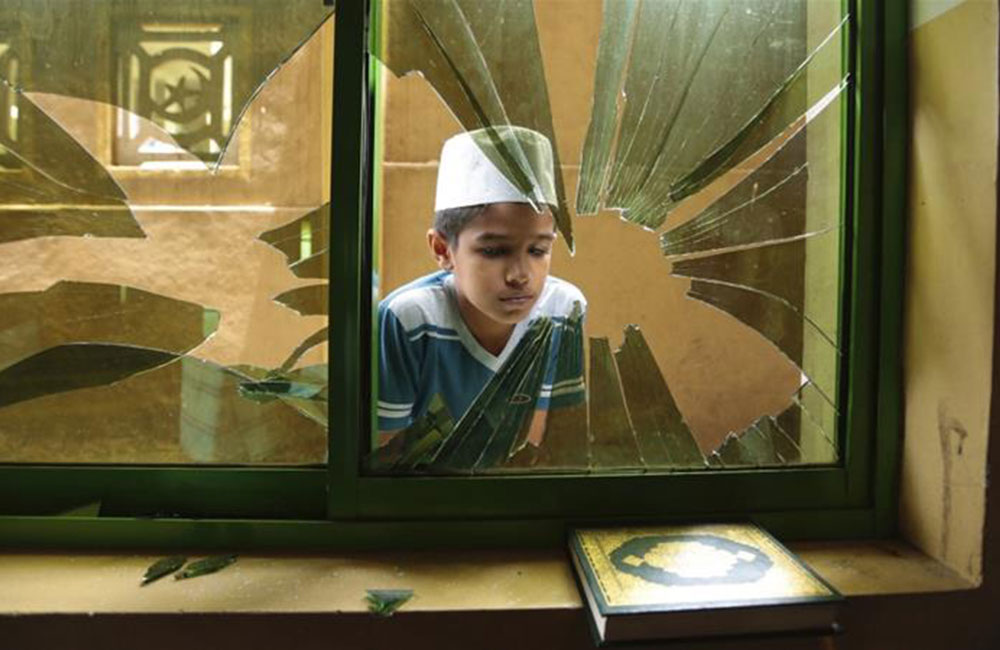
Sri Lanka's Anti-Muslim Violence
Sri Lanka's Anti-Muslim Violence
By Sudha Ramachandran
Over the past fortnight, Sri Lanka has witnessed a surge in violence targeting Muslims, their properties, and places of worship. It prompted President Maithripala Sirisena to declare an island-wide state of emergency on March 6. Curfew was imposed and the army deployed in some of the areas worst-hit by the violence. However, attacks on Muslims continue and appear to be spreading geographically too. A Muslim-owned restaurant in Putallam district was attacked, for instance, in the early hours of March 11.
The current wave of violence was reportedly sparked by an incident of road rage involving a Sinhalese truck driver and a group of Muslim men in Kandy district in the central highlands on February 22. The latter assaulted the Sinhalese driver, which resulted in his death at a hospital a few days later. The day after his death, Sinhalese mobs went on a rampage, attacking Muslims, and burning their homes, shops, and vehicles. The violence has since spread to other districts.
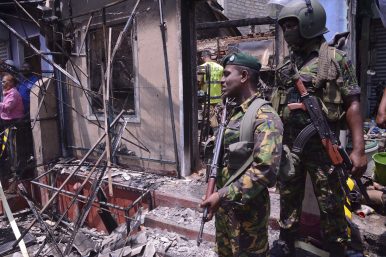
Sri Lanka's security forces stand near a vandalized building in Digana, a suburb of Kandy, Sri Lanka (March 6, 2018). Image Credit: AP Photo/Pradeep Pathiran.
Sri Lanka is a multiethnic, multilingual and multireligious country. Sinhalese constitute the majority (74 percent) and are mainly Buddhist; Tamils are the largest minority and are largely Hindu. The island’s second largest minority is the Muslim community, which comprises 9 percent of the population. Unlike Sinhalese and Tamils, who draw their identity from their ethnicity, religion determines the identity of Sri Lanka’s Muslims.
Violence targeting minorities is closely related to how the Sinhalese view themselves and others. According to the Mahavamsa, a chronicle written by the monk Mahanama in the sixth century CE, the Sinhalese are a “lion race,” descendants of Prince Vijaya, the son of Sinhabahu, who was born of a union between a lion or sinha and a human princess.
Mahanama wrote that Gautama Buddha visited the island three times before Vijaya and his 700 followers arrived. Hence, it was to a land sanctified by the Buddha himself that Vijaya arrived. Indeed, Vijaya is believed to have set foot on the island on the day the Buddha died. Mahanama’s skilful linking of the concepts of Sinhadipa (land of the lion race, i.e. of the Sinhalese) with Dhammadipa (the land chosen by Buddha to protect and propagate his Dhamma or teachings) has had enormous impact on Sinhalese-Buddhist self perception.
Although the Mahavamsa is more myth than fact, Sinhalese-Buddhists draw on it to justify their claim that the island belongs to them and that they are a people chosen to protect Buddha’s teachings.
An important feature of the Sinhalese that has influenced their attitude to minorities is that they are, as noted Sri Lankan anthropologist Stanley Tambiah described in his book Sri Lanka: Ethnic Fratricide and the Dismantling of Democracy, “a majority with a minority complex.” Thus although Sinhalese vastly exceed Tamils and Muslims in terms of numbers, they feel outnumbered by them. They see the island’s Tamils, for instance, as part of the larger Tamil community in the Indian state of Tamil Nadu and the Sri Lankan Muslims as part of the Muslim ummah.
This “minority complex” has resulted in Sinhalese viewing themselves as victims, who have to act, even violently, to defend the island and Sinhalese-Buddhist culture from being taken over by the asinhala (un-Sinhala) and abaudha (un-Buddhist). These groups are viewed as essentially “foreigners,” who are staying on the island due to Sinhalese-Buddhist sufferance.
Violence targeting the minorities came to the fore during colonial rule. Christians and Muslims, for instance, were seen to have benefited from colonial policies. In the early 20th century, Muslim domination of the economy evoked deep resentment among Sinhalese-Buddhists. Revivalists like Anagarika Dharmapala claimed that the Muslims were “alien invaders” who used “Shylockian methods [to become] prosperous like the Jews.” They had become prosperous at the expense of the “sons of the soil,” i.e. the Sinhalese, he said. Publications like Sinhala Bauddhaya and Sinhala Jathiya carried articles that were inflammatory in content and are said to have culminated in the anti-Muslim violence in 1915.
With independence from colonial rule, Sinhalese political parties vied with each other to project themselves as the guardians of the Sinhalese-Buddhists. It led to the Sinhalization of the state and its institutions, which resulted in Tamil political, economic and cultural marginalization. Importantly, Tamils and their properties were targeted by Sinhalese mobs, often backed by the state. Tamil alienation with the Sri Lankan state led to the emergence of a powerful insurgency led by the Liberation Tigers of Tamil Eelam (LTTE).
For almost six decades, the Sinhalese-Buddhist supremacist project thrived by depicting Tamils as “the enemy.” With the LTTE vanquished in 2009, Sinhalese extremists needed a new enemy to keep the project relevant. “Muslims have emerged as that enemy,” writes Nirupama Subramanian in Indian Express.
Since 2012, anti-Muslim rhetoric has surged in Sri Lanka. It has drawn on global Islamophobia but also on long-standing stereotypes of the Muslim community in Sri Lanka. Outfits like the Bodu Bala Sena (BBS) have carried out a sustained hate campaign against Muslims and unleashed violence on them.
Among the accusations the BBS has leveled against the Muslims is that they procreate at a faster rate than the Sinhalese, forcibly convert Buddhists to Islam, and follow a culture that is at odds with that of the Sinhalese-Buddhists. This has fueled fears among the masses that Muslims will soon outnumber the Sinhalese and that Sinhala-Buddhist culture will be wiped out of the island.
Like the BBS, there are other extremist outfits, including the Sinhala Ravaya, Sinhale, and Mahason Balaya, that stoke Sinhalese insecurities and encourage violence by spreading baseless rumors. In the run-up to the current wave of violence, rumors were circulated that Muslims were implementing plans to reduce the Sinhalese population, with a video of a Muslim cook in a restaurant confessing to adding “sterility pills” to food served to Sinhalese going viral in social media.
It didn’t take long thereafter for Sinhalese thugs to be mobilized to vandalize Muslim homes, mosques, and business establishments.
Muslims have come under repeated attack by Sinhalese groups since 2011. Such violence is rarely spontaneous and is said to be organized and orchestrated by outfits close to politicians, including parliamentarians. Rarely have the guilty been punished.
This failure of successive governments to bring to justice those orchestrating the attacks on Muslims is fueling more and deadlier cycles of violence against them.
Sri Lankan analysts are warning that the violence being systematically unleashed on Muslims could provoke a strong response from Muslim youth. It could have “the effect of radicalizing Muslim youth and marginalizing Muslim moderates,” writes political commentator Dayan Jayatilleka in The Island. Recalling how Sinhala racists repeatedly attacked the island’s Tamils “to put them in their place” and the role this played in spawning Tamil militancy and a three-decade long civil war, Jayatilleka points out that this “story is being repeated [now] with the Muslims.”
“We have come one step closer to the emergence of Islamist terrorism in Sri Lanka,” he says.
Indeed, with every incident of violence being unleashed on Muslims and the state avoiding reining in the Sinhalese extremist outfits, Sri Lanka is giving Muslims reason to pick up arms, if only to defend themselves.
The Muslim community in Sri Lanka has kept itself busy with business and trade so far. That is in danger of changing. And for that, Sinhalese extremists and their patrons among politicians and parliamentarians are to blame.
Sri Lanka is staring at yet another looming danger; its Sinhalese-Buddhist extremists are developing links with radical monks abroad. In 2014, Ashin Wirathu, a Buddhist monk in Myanmar who has incited violence against Rohingya Muslims, offered to support the BBS in its fight against what he says is the “serious threat from jihadist groups” in Sri Lanka.
The overseas links of Sinhalese-Buddhist extremists is a clear and present danger. But Sri Lankan parties will be reluctant to sever the still nascent links or criticize Sinhalese-Buddhist extremism. They will not want to lose the votes of the Sinhalese hardliners.
Dr. Sudha Ramachandran is an independent journalist/researcher based in Bangalore, India. She writes on South Asian political and security issues.
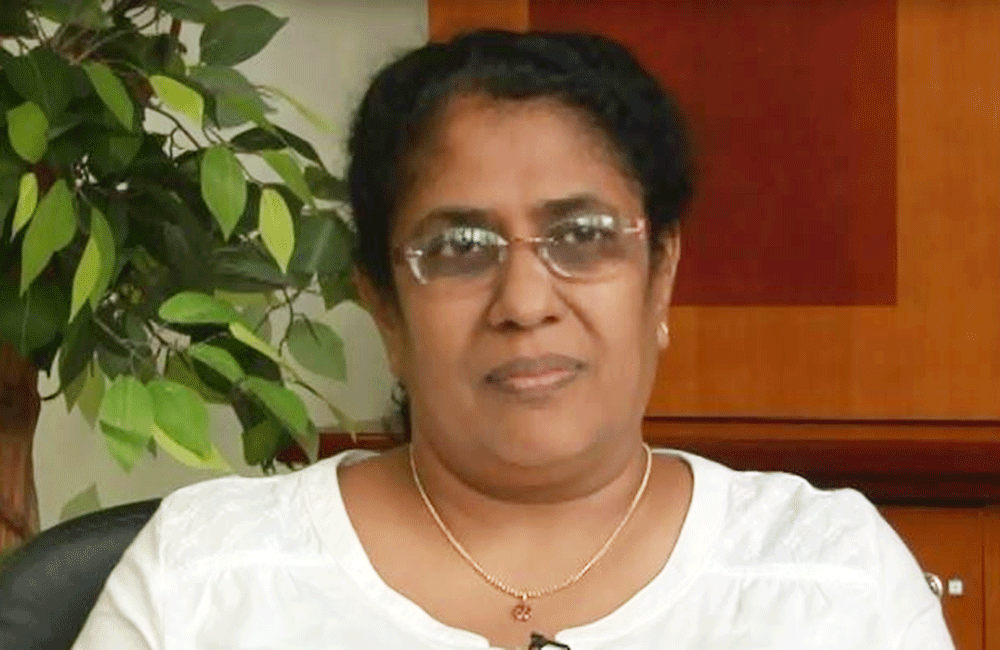
Sri Lanka, a matured united coalition: Justice Minister
Sri Lanka, a matured united coalition: Justice Minister
By Thalatha Athukorale
Ever since the introduction of the Executive Presidency in 1978, Sri Lanka has been governed under single-party rule. Presidents Jayawardena, Premadasa, Wijetunge and Kumaratunge each presided over strong parliamentary majorities and cabinets dominated by their own party. Then, for almost a decade, ‘single-party’ rule was replaced with ‘single-family’ rule and we endured violent horror and economic ruin like our country had never seen before.
I was elected to Parliament shortly before Mahinda Rajapaksa took office under the dark cloud of his, “Helping Hambantota” heist. I watched as our president politicized the civil service, degraded his predecessor, and smiled innocently at journalists and political opponents cowering in the shadow of the dreaded white vans. I grieved at the funeral of a hero who was slaughtered on the street for exposing the high crimes of the first family.
After ten years of this tyranny, the UNP united patriots of the SLFP and minorities of every stripe, to overthrow single-party rule and replace it with a truly ‘national’ government. Our leader, Ranil Wickremesinghe, sacrificed his chance to seek election as President. He prioritized national unity over his own ambition for the presidency. Maithripala Sirisena, in an exemplary show of courage, risked his life by openly defying and challenging the Rajapaksa family.
Under President Sirisena and Premier Wickremesinghe, Sri Lanka has matured beyond ‘single party’ and ‘single family’ rule, to a united coalition representing both, the UNP and SLFP. This coalition, which I am proud to call ‘yahapalanaya’, has shown more political courage in the last three years than all governments combined have in the 30 years before it.
By fighting for the 19th Amendment to the Constitution and expediting the appointment of the Constitutional Council and independent commissions, we removed the cloud of political influence from public service, police and other areas of government. We did so on the eve of a general election campaign, when previous governments galvanized the machinery of the state to capture votes.
We restored a culture of accountability and rule-of-law to the justice system in the country. The so-called ‘joint opposition’ and Podujana Peramuna have barely a single leader not facing serious charges for crimes against the state that were blessed by the ruling family. In contrast, several UNP cabinet ministers have stepped down over the mere appearance of impropriety. That is the political culture our citizens deserve. This government supported the justice system that convicted a Deputy Inspector General for contract killing. Two other senior DIGs were arrested on allegations of assisting murderers.
The last government responded to defeat at the 2015 Presidential Election by trying to usurp power under the cover of darkness with trumped up civil-unrest and emergency powers. This government toppled the tradition of staggered local government elections – which benefit politicians in power – and for the first time called these elections on one day, nationwide.
The election campaign itself has been conducted unlike any LG elections in the past. Journalists, no matter how viciously or unfairly critical they are of the government, know when they kiss their children goodbye in the morning, they would come home safe in the evening. Coverage is not manipulated by death threats. State institutions are not being mobilized by their political masters to canvas for government-backed candidates.
Those opposed to the UNP and SLFP at this election are opposed to the very ideals and culture of social justice that the UNP and our government represent. They are terrified, if the state apparatus keeps racing towards transparency, accountability and independence, they would no longer have a place in a system that puts citizens before politicians.
It is this vision rooted in the UNP ideology that ensured that at least a quarter of all candidates for your vote will be women. We believe, the empowerment, education and equality of women is key to the advancement of the nation. Increasing representation of women at every level of government and civil society is critical to that goal.
This government recognized the suffering of many Sri Lankans from heart disease and took steps to radically cut down the prices of medications and allow stents to be given free of charge. We guaranteed medical insurance for every schoolchild. We passed laws that enshrine the rights of victims of crime, and ensured victim and witness protection from the state. We enshrined a right to information for every Sri Lankan, empowering citizens and the media to probe into the inner workings of government, and foster transparency and accountability.
The UNP has accomplished all of this because we stand united for a Sri Lanka defined by the values of a transparent, secular and liberal democracy. Ranil Wickremesinghe is one of only two Prime Ministers in our history to have graduated from a local university. He served under Presidents Jayawardena, Premadasa and Wijetunge, consistently holding these values above the political interests of the party. Despite being one of the media’s favourite targets for caricature and ridicule, it was Ranil Wickremesinghe who abolished the charge of criminal defamation from Sri Lanka’s statute books, ensuring that no journalist could be prosecuted by the police for what they report.
It is testament to his success that most private media organizations today are so overtly hyper-critical of the government’s every action. A single ill-advised public utterance by a Minister today will garner more airtime and newsprint than did any of the several overt death threats received by journalists a decade ago.
On February 10, we face a crossroads. I ask that every Sri Lankan reflect on the last three years and cast their votes, upholdingthe values of accountable and open government.
It is only by fostering this culture across the country that we can bring good governance and rapid development you deserve to every village and town in Sri Lanka.
(Courtesy the Sunday Observer)
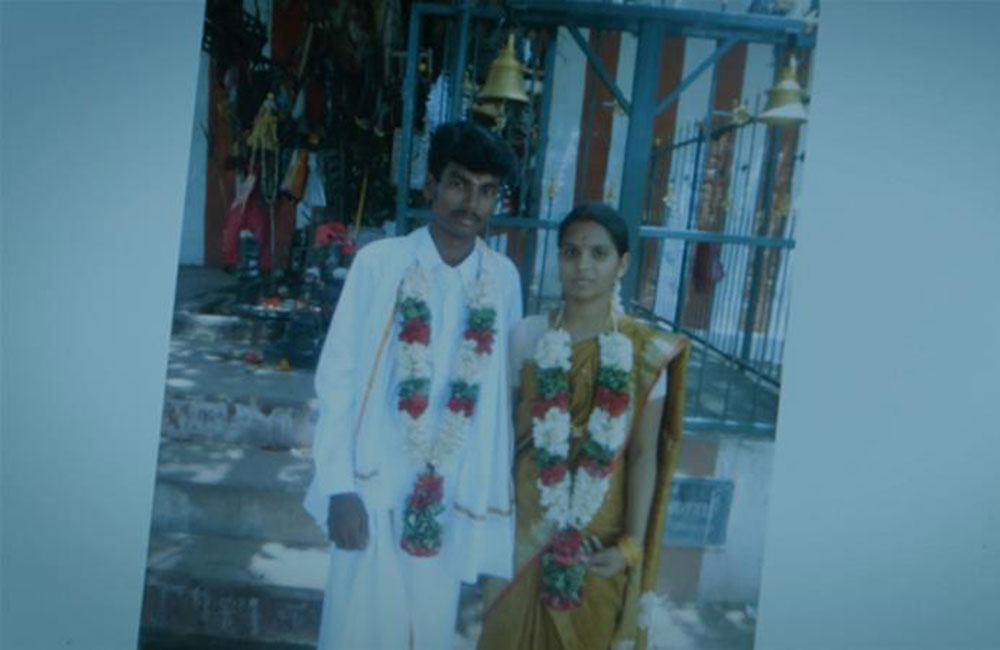
'Honour' crimes in India: An assault on women's autonomy
'Honour' crimes in India: An assault on women's autonomy
Kavita Krishnan
14 Mar 2018
Violence against women's autonomy, in all matters and especially in matters of sexuality and marriage, is one of India's most widespread and tenacious forms of gender violence - and also the least recognised. It is a form of violence that hides in plain sight. Violence (against men and women both) to prevent a woman from exercising her choice in love and marriage is not properly documented since India does not have a specific law against "honour" crimes. To spot such violence and confront it, you need to look beneath the surface and read between the lines of available documentation.
In 2014, an English daily, The Hindu, tracked 583 rape cases decided by New Delhi's district courts in 2013. It found that the single largest category of cases (nearly 40 percent) involved consenting couples who had eloped, after which the parents (usually of the women's) had filed cases of rape. This startling fact meant that rape statistics are actually disguising something else: coercion and domestic violence against women's sexual autonomy. This sleight of hand, that conflates "relationships chosen freely by women" with "rape", allows authorities - police, women's hostels, factory management - to continue to pass off restrictions on women's liberties as necessary for "safety from rape". Strict curfews, bans on using mobile phones, punishments for being found talking to a man, dress codes banning "immodest" or "western" clothes, informing a woman's parents if she is found being friendly with a man - these are just some of the "safety" rules imposed on women in educational institutions and workplaces that help maintain the ecosystem in which "honour" crimes take place.
The term "honour" crimes is somewhat misleading not only because it implies that such crimes are "honourable". It also gives the impression that these crimes are a product of the "culture" - customs and traditions - specific to certain communities or faiths. Associating such crimes with rigid traditions and certain communities alone prevents acknowledgement of the fact that these crimes are extremely widespread in India, across regions and communities. For instance, in 2010 when Nirupama, a student of journalism, was killed by her family members in Jharkhand for planning to marry her boyfriend from another caste, the then Chairperson of India's National Commission of Women said that her murder did not count as an "honour" killing because such killings were specific to the Indian state of Haryana where the "khap panchayats" (community councils) exist.
Neelam Katara, the mother of Nitish Katara who was killed by the sons of a prominent politician DP Yadav because he was in love with Yadav's daughter, recounts that during the murder trial the Sessions Court judge asked her, "How is this an 'honour' crime? Daughters are killed in honour crimes, but here your son was killed". She also recounted that during the appeal hearing in India's highest court, a judge asked her how the murder could be an "honour killing" since her son was from a "good caste". The phrase reveals how even Supreme Court judges think of dominant castes as being "good" and oppressed castes as "bad", but it also reveals how "honour crimes" are understood narrowly as a set of practices (killing of daughters, or objection to daughters marrying "beneath" them). Instead, such crimes need to be understood as patriarchal violence against the daughters' sexual agency and autonomy. It needs to be acknowledged that such crimes can take a very wide variety of forms, including violence against the daughter's partner. Moreover, we need to recognise that such violence is not an expression of "culture" alone, or else why would modern educational institutions and even factories supplying to global corporations use the same forms of violence (disguised as "protection" or as "culture") to discipline women in education and in workplaces?
It would be better to use the term "patriarchal crimes against autonomy" to reflect the character of such violence more accurately and strip it of the myths that subtly valorise it. In the Nitish Katara case, the Supreme Court of India tried to redefine the concept of "honour crime" as a crime against women's choice, observing that a woman's "individual choice is her self-respect and creating (a) dent in it is destroying her honour."
In India, the idea that parents have a right to control who their daughter marries has especially wide acceptability because of the caste system: caste boundaries can be maintained only by surveilling and controlling women to make sure they marry in keeping with caste norms. Any autonomy by women is a threat to this order. And some of the worst violence is meted out to men of the most oppressed - Dalit - castes if they marry a woman from a more privileged caste.
In March 2016, a young Dalit man in Tamil Nadu, Shankar, was brutally hacked to death at a public crossroads in the presence of his wife Kausalya - Kausalya's parents had ordered the hit because she was from the dominant Thevar community. Kausalya also was badly injured. But when she came out of the hospital, she refused to return to her parents. Instead, she has become a committed anti-caste campaigner, travelling on her motorbike addressing talks against caste and patriarchy, and offering support to other women in similar situations, whose spirit is in danger of being broken. But the Tamil Nadu state government has just issued a circular making woman like Kausalya extremely vulnerable to violence: it makes parental consent mandatory for marriages to be registered. In a state where right-wing parties are running a campaign instigating violence against inter-caste marriages, especially those where the man is Dalit, such a circular is dangerous.
Women in inter-faith and inter-caste relationships are subjected to immense torture and coercion at the hands of their families, their communities, and increasingly, right-wing and fascist political parties in India. In many cases, they succumb to the pressure and disown the relationship - especially if their partner has been killed. Political organisations close to India's Hindu majoritarian ruling party are unleashing organised violence against inter-faith relationships in which a Hindu woman loves a Muslim man - they term such relationships as "love jihad".
A sting operation caught leaders of India's ruling Bhartiya Janata Party (BJP) and its parent organisation, the fascist RSS, on tape making detailed boasts of violence against women, done in the name of "rescuing" them from inter-faith marriages. One BJP leader explained that such campaigns instigating fear of "love jihad" among Hindu parents was a key strategy to build support for the Indian Prime Minister Narendra Modi. These leaders openly boast of surveilling local courts to track impending marriages of Hindu women to Muslim men, mobilising violent crowds to separate the couple, beating the women with wooden planks, and even drugging them to force them to give up the relationship and file a false case of rape against their boyfriend. Several television channels in India participate in creating and sustaining the myth of "love jihad". However, not a single case of alleged "love jihad" has actually stood the test - each has proved to be entirely consensual. In such cases, the young woman is up against not only her own parents and community - but against political forces that command power. Standing up to such pressure calls for immense courage.
In 2014, a Hindu woman, Shalu, fell in love with Kaleem, a Muslim, in Meerut. The fascist outfits portrayed the relationship as a classic case of "love jihad". Shalu was forced to file cases of gang rape against Kaleem and his family members. The media amplified the fascists' sensational claims that Shalu was one among scores of Hindu women lured by Muslim men and then victimised. But Shalu eventually managed to escape her parents' home, go to the police station and tell them the truth - and Shalu and Kaleem are now married.
Another woman victim of a similar patriarchal crime is Hadiya, who converted from Hinduism to Islam and then chose to marry Shafin Jehan. Her father approached court to get Hadiya's marriage annulled - and in a verdict that flouts India's Constitution, the Kerala High Court actually annulled the marriage and handed 24-year-old Hadiya over to the "custody" of her father, claiming that "As per Indian tradition, the custody of an unmarried daughter is with the parents, until she is properly married". Indian citizens who hoped that the Supreme Court would lose no time in overturning such an outrageous order, were in for a shock. The Supreme Court took six months to do what they should have done on the first day: free Hadiya and declare that she was free to chose her faith and her partner in marriage (the order to this effect was finally passed on Women's Day this year).
Instead, they ordered India's anti-terror agency the NIA to go on a fishing expedition to see if terror groups were conspiring to convert Hindu women to Islam and radicalise them! Hadiya meanwhile was subjected to brainwashing attempts by notorious Hindu radical outfits at the behest of her father. These outfits, masquerading as "yoga clinics" specialise in trying to break up inter-faith marriages. It was only because Hadiya stood firm in spite of the prolonged imprisonment in her father's home, that the Supreme Court belatedly (and with seeming reluctance) declared that it had no option but to set her free and uphold her marriage. Shockingly, the Supreme Court passed no strictures against the brazenly unconstitutional Kerala High Court verdict.
When a young New Delhi man Ankit Saxena - a Hindu - was killed on a public street by his Muslim girlfriend's father, there was an organised political campaign by leaders of the ruling BJP to portray the killing as proof of the cruelty, barbarism and backwardness of Muslims. It was his family and close friends who, admirably, resisted the attempt to use his death to further Islamophobia - pointing out that it was a patriarchal crime that people of all communities in India have been known to commit.
It is clear that a wide range of measures are needed to effectively combat patriarchal crimes against love and against women's autonomy in India. Women's movements have for long been campaigning for a law against "honour-based" crimes, on the lines of the one enacted by Pakistan. They point out that the United Nations too has recommended laws against such crimes. In India, another urgently needed reform measure is to get rid of the clause in the Special Marriage Act (the law that applies to inter-faith, secular marriages contracted in courts) requiring couples to publicly announce their marriage plans a month before the wedding. It is this waiting period that gives parents and motivated political outfits time to organise violence to prevent the marriage. India's women are campaigning not only against such patriarchal killings - but against any restrictions, on any pretext, on adult women's autonomy, mobility, and choice. Unfortunately, that struggle is especially hard now - with the ruling political forces today backing a full-fledged ideological and physical assault on women's autonomy.
Source : Al Jazeera
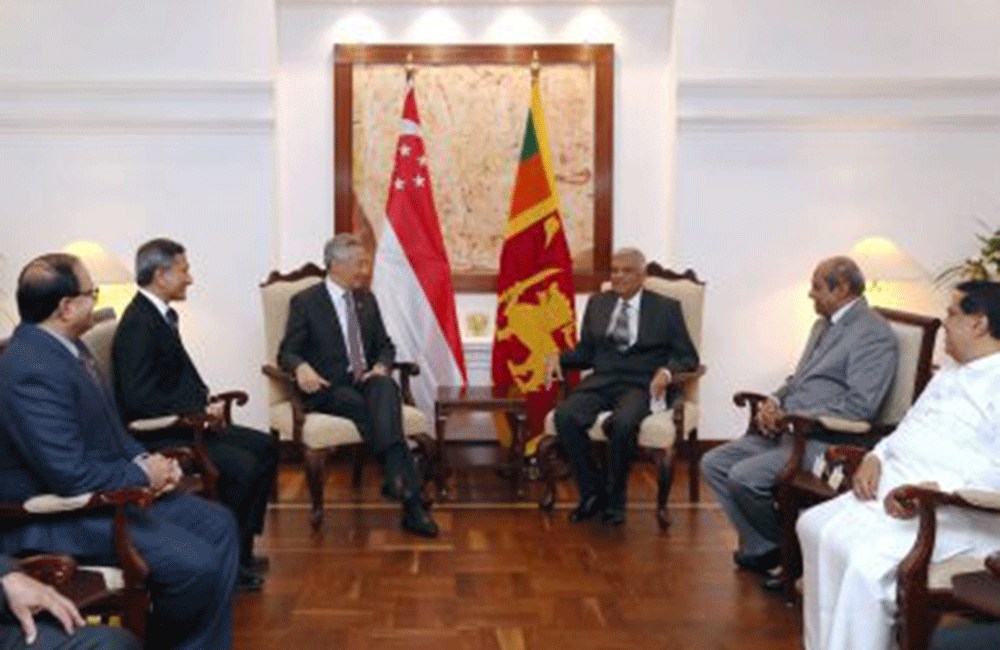
Does Sri Lanka’s 'Look East’ Strategy to Court ASEAN Make Sense?
By Lasanda Kurukulasuriya
February 01, 2018
Two Southeast Asian leaders, Singapore’s Prime Minister Lee Hsieng Loong and Indonesia’s President Joko Widodo, visited Sri Lanka during the week ending January 26. During Lee’s visit (from January 22 to 24) Sri Lanka signed a Free Trade Agreement (FTA) with Singapore, described as being the first ever Colombo has inked with a Southeast Asian country. The Sri Lanka’s government further showcased the agreement as being “part of a broader ‘Look East’ strategy.”
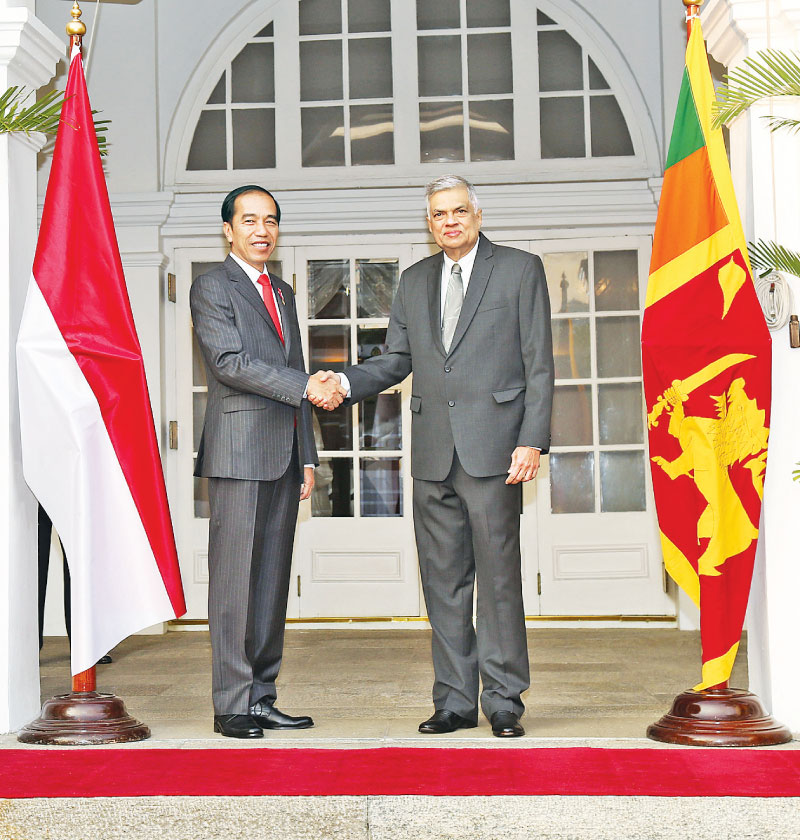
Prime Minister Ranil Wickremesinghe with Indonesian President Joko Widodo.
While the FTA has by all accounts been welcomed by Singaporean firms, in Sri Lanka it has been opposed by a large collective of local trade unions and professional associations. By the government’s own admission, Singapore is not a significant export market for Sri Lankan goods, and Singapore’s investment in Sri Lanka amounted to only $658 million from 2015 to 2017. Whether the FTA will open doors to other ASEAN markets for Sri Lanka, as the government expects, would seem to be a toss-up at this point.
The more interesting puzzle would seem to be what the government means by “Look East.”
This term is generally associated with India and its economic relations with Southeast Asia. In that context, “Look East” had its origins in the early 1990s. Since 2014, under the Modi government, India has upgraded that policy to “Act East,” a move welcomed by the United States.
“When looked at, with regard to China, the Act East policy appears to be a whole different ball game” writes Vaishnavi Mulay, in a post on the London School of Economics blog. “The Act East policy goal then appears to be two-pronged: boost India’s standing as a regional power by initiating increased cooperation in the region, and act as a counterweight to the increasing strategic influence of China.”
New Delhi’s “Act East” theme was on full display last Friday at India’s Republic Day parade, where all ten ASEAN leaders were in attendance as chief guests. The 69th anniversary event was preceded by a summit to celebrate 25 years of India-ASEAN relations.
Mulay says smaller states in China’s vicinity, like Vietnam and the Philippines, look to India to help counter Chinese hegemony. “Strategically this is a clever move as officially India does not follow a policy of containing China; cloaked by the Act East policy, India is able to assert its presence in the region while at the same time this goes hand in hand with India’s efforts to strengthen ties with ASEAN,” she writes.
However, Sri Lanka’s relationship with China is not comparable with that of India, or those of the ASEAN states. Sri Lanka has no border disputes with China, nor has it faced any aggression from Beijing, which typically supports Colombo in international forums. China has now become the biggest investor in Sri Lanka’s postwar infrastructure development.
There would seem to be no clear explanation for Sri Lanka to “Look” or “Act” East – if the term is taken to mean pursuing ties with ASEAN in order to counter Chinese influence. If Sri Lanka seeks to engage more closely with ASEAN, it would have to be for the intrinsic benefits of strengthening those bilateral relationships, and not as part of any counterbalancing strategy.
External strategic developments may perhaps help explain Sri Lanka’s “Look East” terminology. When U.S. Defense Secretary Jim Mattis revealed the Trump administration’s new national defense strategy in Washington on January 19, he marked a shift in emphasis, from terrorism to “great power rivalry,” flagging China and Russia as the main threats. He noted that China is using “predatory economics” to intimidate its neighbors, while “militarizing features in the South China Sea,” according to reports. The speech came ahead of his visit to Indonesia and Vietnam. “Mattis wants to increase maritime cooperation in the region, and Indonesia — the connection point between the Indian and Pacific oceans — is key to that” said a U.S. Department of Defense news item.
It is against this backdrop that both ASEAN leaders, in their respective joint statements, made calls for Sri Lanka to “enhance its engagements with ASEAN and the ASEAN Regional Forum.” Jokowi, during his visit from January 24 to 25, told Sri Lanka’s President Maithripala Sirisena that his country “expects Sri Lanka’s cooperation to enhance cooperation between the countries in the Indian Ocean and Pacific Ocean region,” according to the Sri Lankan President’s Media Division. Their joint statement recognized the “vibrant maritime connectivity” between the two states, the significance of bilateral defense cooperation, and the importance of “maintaining close bilateral interactions between maritime security agencies, anti-narcotics agencies, and on counterterrorism.”
“Look East” cannot be explained in relation to Sri Lanka’s economic policies alone. The answer to its meaning, if any, is blowing in the geopolitical winds that sweep the Indian and Pacific Oceans.
Lasanda Kurukulasuriya is a Colombo-based independent journalist, a correspondent for the New Internationalist and columnist for the Daily Mirror.

Young “Saffron Buddhists” and their “anti-Muslim patriotism”
Young “Saffron Buddhists” and their “anti-Muslim patriotism”
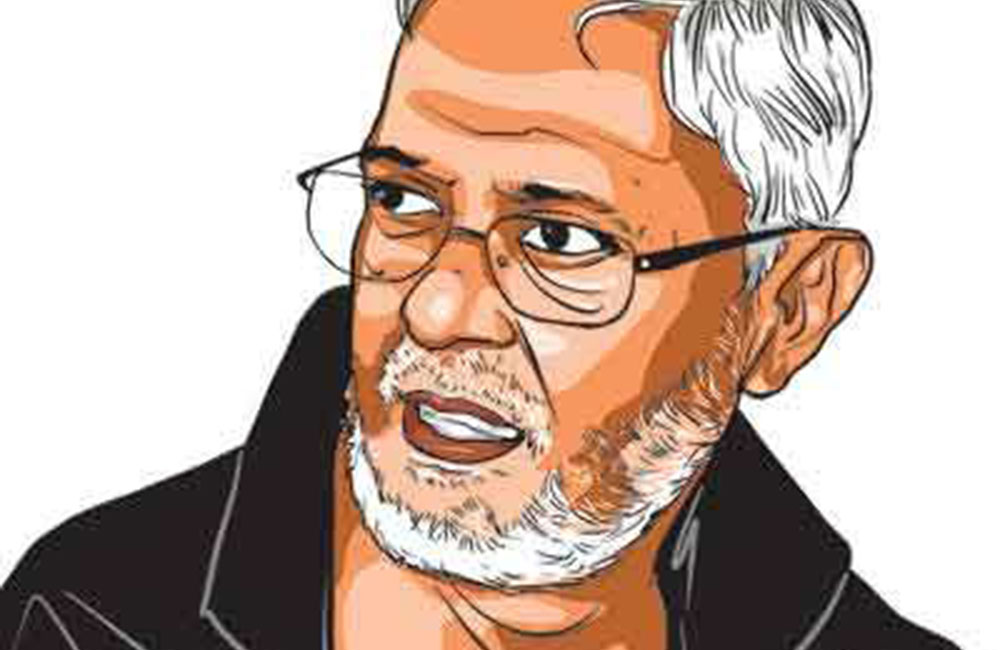 Kusal Perera
Kusal Perera
March 11, 2018
Most now talk about anti-Muslim violence being transported from Ampara to Digana. It wasn’t really from Ampara to Digana, but from Aluthgama-Beruwala to Mahiyangane, to Gintota and then to Ampara and for now to Digana. Five very open anti-Muslim conflicts within less than 05 years that begin with MR rule, extending into this unique ‘Yahapalana’ (good governance) rule. Next can be anywhere a new “excuse” could be found and used for another round of violence. And in all instances, there is a Temple and a few Buddhist monks involved and taking the lead.
A young “Tweep” who wanted to understand this phenomenon, engaged me through direct messaging. She referred to a video clip that went viral during the Kandy mayhem stressing on the claim made by a young Buddhist monk the “Muslim men came, married our (Sinhala) women and grabbed our land”. This same young monk had another video clip going viral that claimed the Muslim traders encroached on the livelihood of Sinhala villagers and created problems for Sinhala people, who are otherwise capable of leading a prosperous life. This young “saffron patriot” goes to say, the Arab traders who landed in ‘Hamban’ Thota (meaning Hamban port) were called “Hambaya” because they landed in Hambanthota and was allowed to engage in trading. Many similar stories are rattled off without any effort to prove them.
These “anti-Muslim” sentiments are baseless as his claim that Buddhist monks led warriors from the frontline when Dutu Gemunu waged war. Perhaps the monks followed the warring Sinhala soldiers to attend to religious rituals at death. Soldiers who died in the battlefront in those ancient times, had to be buried in that same area. They had to be given their last rites according to Buddhist rituals. That needed Buddhist monks to follow foot soldiers going to war. In those ancient days, there was no airlifting of dead bodies to villages of birth as done during the now concluded militarised ethnic conflict. This young monk is also wrong in how the port came to be known as “Hamban Thota”. “Hamban” is an ancient seafaring rafter. That was why the landing site they used came to be called “Hamban thota” and those who came in these rafters came to be identified accordingly.
It is true, the Muslim people cannot claim ancestral rights to our ancient history as Tamils do. In fact they don’t. But their arrival in this island was also a historical process that colonised most countries along the “sea trade route” from Muscat to Merauke in Irian Jaya. These long and time consuming sea journeys were daring and risky in those ancient rafters and primitive boats. They were undertaken by only men. There is no record of any women seafarers even during the period of Columbus. There were those men who never went back. They settled in those lands their boats and rafters anchored for long. Obviously that meant raising their own families with women in those lands they settled. Perhaps they grew as closed communities and developed an identity of their own with male Muslim dominance in an ancient world where patriarchy was the hallmark of all human activity; craftmanship, trade, travelling, seafaring or war.
This was quite natural and human in those feudal ancient society and has not changed very much even to date. The Southern fishermen who go out for long durations in ‘multi day’ boats move to the Eastern coast, during Southern monsoon. Until the militarised ethnic conflict that severely restricted fishing in those Eastern waters, fishermen from especially Matara and Hambanthota districts settled in Eastern coast raising their own families with Tamil women. Thus to say, “they (Arab Muslims) came, took our women and grabbed our land” is wholly inhuman and out of context.
When these ‘saffron patriots’ talk of land grab by Muslim men, giving it a spin to mean they forcefully grabbed land from innocent Sinhala villagers, it sounds like the military that grabbed land of innocent Tamil people in North and East. To grab land as it is spun today against Muslim people, it needs power and force; either feudal power or religious power, the Muslim people were not having.
Ownership of land has a historical relationship from ancient time. One, they are caste based in rural society. The landed proprietors are always and mostly the ‘Govigama’ (equivalent to Vellala in Tamil society) nobility of rural society. As one goes down the caste hierarchy, the extent of land ownership gradually recedes. Two, most land in those rural areas were handed over to temples and for religious purposes by Kings who owned the land. These lands are called “Viharagam” and “Devalagam”. From Kandy, right down to Mahiyangana, vast tracts of cultivable land still belong to Malwatte and Asgiriya chapters or to temples that come under their authority like the Badulla Muthiyangana temple. It is same in Anuradhapura where the 08 temples and shrines (Atamasthana) within the “Sacred City” hold rights to cultivable land bestowed upon them by ancient kings. Most Buddhist temples known as “Purana Raja Maha Vihara” (ancient royal temples) have cultivable land as “Viharagam” and “Devalagam”. Thus dominance over rural land even today is held by Buddhist temples, the ‘Govigama’ nobility in up-country and majority ‘Govigama’ peasants and mostly small time Sinhala trader community now into their second and third generations.
It is also a fact, after the Waste Lands Ordinance of 1899 under British colonial rule when for the first time, land owned by the King and used by people, was turned into a ‘commodity’, bought over by the new landed proprietary created through the Colonial trade and commerce economy. Plumbago mining industry and liquor “Renting” turned noble Sinhala collaborators in Western Province and adjoining areas also into a rich land owning gentry. Muslim and Tamil traders also bought land where they had trading interests. Yet none could encroach or buy over “Viharagam” and “Devalagam” land, except in very rare instances.
These “temple owned” land and also wealth and income created upon them is jealously guarded by Chief monks of temples who make certain they are passed on to the next generation within the family. In a market economy, more within a ‘free market economy’ this has created much frustration among young Buddhist monks who had no clue why they were ordained as little kids and what they were expected to be when they grew up.
In such free market context, except in exceptionally rare occasions, none has robed himself on his own volition. It would be safe to say over 99 per cent of the monks were ordained as little children, decided by their parents. They are all handed to the Temple by poor parents for many reasons, poverty being the most common denominator. There are reasons openly told and openly accepted without any social dialogue, while there are some that are not even whispered. One is that the Chief monk of the temple ordains the ‘closest kin’, often a child of his brother or sister to be the next in line for the post of Chief monk. That ensures, the wealth and income of the temple remains within the family. The other is the exploitation of poverty in luring parents to hand over children for ordination for purely personal interests, though not discussed. This leaves out the fact that there is heavy abuse of child monks in many forms, in most temples.
These child monks thus grow into youth in deformed and often in very taut and stressful environments. They do enrol in “pirivenas” for education where they are taught subjects in our national education and are allowed to sit for G.C.E Ordinary and Advance Level exams. A small percentage enter State universities and graduate. Most graduate monks take to teaching.
But where they feel alienated and left out of temple life is, where they don't get access to temple wealth and income not being heir to the post of high priest of the temple. Most who enter universities, often complain they are not provided enough money to sustain themselves through university education, despite having the “Mahapola” scholarship. This being a fact of robing little children who wish to have a comfortable life despite the “saffron robe” when they grow up as youth in a free market society with an unlimited consumer choice.
Such young monks have tried out many exits to settle comfortably in life, while being in saffron robes. Some have moved out from their parental temple to establish their own temples. That was one reason temples mushroomed especially in urban areas where they managed trader and rich urban middle class patronage. In rural society they were supported by traders and the lower social segments that had to struggle for their life and thus wanted a “sacred life support”. There were those who moved into expensive and fashionable “Ashrams” that sprouted in WP catering to the middle aged middle class. The urban middle class that feels exhausted in this neo liberal economy. There are others who exploit the education market. Temples turned into tuition centres with some graduate teacher monks, where the head priest benefits from rent. Very appealing and attractive oratorical “bana preaching” for high end middle class urban market is yet another. There is also those traditional mystic rituals often looked for by the majority innocent and poor Sinhala Buddhist laymen and women.
With that is tied the role of the caste affiliated Sinhala Buddhist trader. During Colonial rule, Sinhala traders emerged from among the low country Sinhalese and very much from the 03 castes, Karawa, Durawa and Salagama that were not directly linked to the ancient feudal society. An exception was the Vahumpura caste that too grew into a formidable merchant clan. With no low country ‘Royalty’ to facilitate regaining full ordination as it happened before in ancient times, the Sinhala traders stepped in to fund and facilitate ‘full ordination’(Upasampadawa). It was Sinhala Buddhist traders who funded the establishment of the two Sangha nikyas “Amarapura” and “Ramanna”, in 1803 and 1834 respectively, when Shyamopali Siyam nikaya of Asgiriya and Malwatte chapters refused “full ordination” to “low country monks from low castes” as they termed. Since then, the Sinhala Buddhist trader community organised with their own caste interests became the major financier in Sangha society. To quote from a previous blog post of mine, “There was apparently no other independent existence for Buddhism in Sri Lanka. Yet for Heenayana Buddhism that “preached” suppression of secular comfort including giving up lay bondages and wealth, to have a trader funded base, left it with a living contradiction. This contradiction was often eased out with “giving away” (Dhana) that always accrued with temples and monks. Thus the new society that evolved with this new Sangha divisions had an inherent dynamic to lead it to degeneration and decline.” (http://kusalperera.blogspot.com/2010/08/development-buddhism-and-sri-lankas.html)
In a free market economy where the urban cashflow is very much dependent on dress and costume, food and retail pharmaceutical trades, the competition for market dominance is being fuelled on ethnic lines. There is a visual presence of new Muslim businesses in these market areas coming out airy and colourful. It is thus challenged by the Sinhala Buddhist trader community by an elimination method and not by competing for better and efficient service and quality products. Politics for such elimination brings out the frustrated young monks as “saffron patriots” who till then had no social presence and an importance. They are made “saviours” of a “Sinhala Buddhist society that is being submerged in a fast growing Muslim population”. They are thus given a dual role. One to play “saviour” of Sinhala Buddhists and the “Land of Gauthama Buddha” and then to challenge the old hierarchical “temple ownership” by high priests. Hence the cry, “You owe it to the people who feed you to come out of the temple and stand with them”.
The main focus has not changed since the first Sinhala-Muslim riots in 1915. It is the “market and its cashflow”. It was the “market” that was important till the 1983 Black July ‘Tamil pogrom’ that completely changed the conflict into a “separatist” war. Since the end of the militarised ethnic war, it is once again the 1915 “market war”. Buddhist monks cannot stay out of it when it is the Sinhala Buddhist traders who decide options.
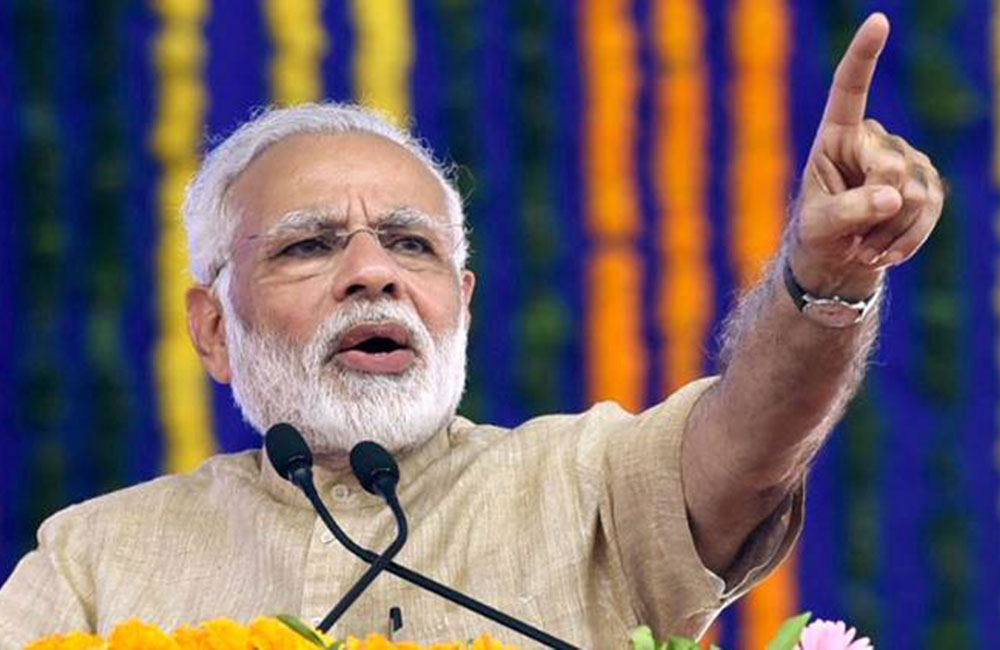
Narendra Modi: A false crusader for women's rights
Narendra Modi: A false crusader for women's rights
Ajaz Ashraf
25 Jan 2018
These days, a popular joke making the rounds in India is that the ruling Bharatiya Janata Party (BJP) loves Muslim women, but not Muslim men.
The joke makes fun of BJP's attempts to portray its right wing Prime Minister Narendra Modi as a crusader against religious orthodoxy, seeking to liberate Muslim women from the clutches of patriarchy.
The BJP started crafting this narrative in August last year, after India's Supreme Court banned "triple talaq", or instant divorce, practised by some in the Muslim community. Four months after the Supreme Court decision, India's BJP-controlled lower house of parliament passed a bill that seeks to criminalise the practice. If the bill is voted into law, men found guilty of divorcing their wives through "triple talaq" could face jail time of up to three years.
The governing party believes it will deter men from resorting to the practice, and credits Modi for having the "courage" to reform Muslim personal law and challenge patriarchy.
But it was easy for many Indian Muslims to see the hypocrisy in this claim.
First of all, the bill was, at least in part, the result of decades of campaigning by Muslim women's groups and victims against the practice. Also, the contents of the bill led many to believe that it was put together not to help Muslim women, but further criminalise Muslim men - it allows anyone, not only the wife, to lodge a complaint, and requires the husband to pay maintenance to his wife even while he is imprisoned.
Second, throughout his tenure as India's prime minister, Modi has done nothing to challenge patriarchal practices affecting Hindu (and other) women. His party has opposed, for example, the criminalisation of marital rape, which according to BJP functionaries, "cannot be suitably applied in the Indian context".
Modi is yet to speak out in defence of Hindu women dragged into the "love jihad" frenzy within some Hindu communities.
'Love jihad'
Hindu groups allege that "love jihad" is a conspiracy by Muslim men to lure Hindu women into marriages with Muslims, with the sole aim of converting them to Islam. Occasionally, they claim that radical Muslim groups are behind "love jihad".
Late in December last year, in the city of Ghaziabad, near New Delhi, Hindu activists clashed with police while protesting the marriage of a Muslim man and a Hindu woman, which they claimed was an act of "love jihad".
The bride's family insisted that the marriage was consensual, but BJP officials claimed that the families had not received "permission" to hold an inter-religious marriage, and it was a case of "forced conversion". The bride hadn't converted to Islam before the marriage, but they did not seem to care.
Even if she did, the couple did not need to ask for anyone's permission to get married, as the Indian constitution allows the country's citizens to convert to another religion. They were married under the Special Marriage Act, under which interfaith couples can marry without converting. But this does not deter Hindu fundamentalists from targeting interfaith couples and harassing - even violently attacking - any Muslim man who enters into a relationship with a Hindu woman.
Also in December, this time in Rajsamand, Rajasthan, 36-year-old Shambhulal Regar hacked a 50-year old Muslim man named Afrazul and burned his body for allegedly attempting to commit "love jihad". Regar claimed he killed Afrazul "to save a Hindu woman from becoming a victim of "love jihad". The police later discovered that Regar mistook Afrazul for another Muslim man, who allegedly had an affair with the woman.
The campaign against "love jihad" continues to get more brutal with each passing day. In January, three Muslim brothers were beaten at a court in Baghpat, Uttar Pradesh - simply because one of them wanted to marry a Hindu woman. The assailants belonged to the Vishva Hindu Parishad, an affiliate of the Rashtriya Swayamsevak Sangh (RSS), the parent body of the BJP.
According to RSS-supported Hindu fundamentalists, a Muslim man's love for a Hindu girl cannot be real. It has to be fake. It has to be an attempt to convert an innocent girl to Islam, recruit her for a "terror" group, or even transform India into a Muslim country.
These claims, and Prime Minister Modi's telling silence on the issue, are fanning paranoia about Muslims in India. This paranoia is also hurting, and even killing, Hindu women that the proponents of the "love jihad" myth are allegedly trying to protect.
Targeting Hindu women
Earlier this month, in the southwestern state of Karnataka, a 20-year-old Hindu woman named Dhanyashree was driven to suicide by Hindu fundamentalists over a single photograph.
Her WhatsApp profile photograph was closely cropped with only her eyes showing against a black background. It created the illusion that she was wearing a veil. Members of the Bharatiya Janata Yuva Morcha, BJP's youth wing, demanded that she remove the photograph.
She was harassed and rumours were started that she was in a relationship with a Muslim boy. Unable to bear it, she committed suicide.
BJP officials, rather than seeking justice for Dhanyashree - as they allegedly do for Muslim victims of triple talaq - chose to defend the men who precipitated her suicide.
A BJP leader from Chikmagalur, C T Ravi, told Indian media, "What has happened in the Dhanyashree case is unfortunate. A worker of the BJP, Anil, has been arrested for it. But he has not done anything criminal; he has not committed any murder. He was just trying to inform the girl's family about the dangers of Love Jihad, which has claimed so many Hindu girls. His intention was not to provoke her to suicide."
Dhanyashree is not the only woman victim of India's "love jihad" insanity. Across India, many other Hindu women are being victimised for their relationships with Muslim men.
The alleged ISIL connection
In August last year, Akhila, a Hindu girl from Kerala, who shared a flat with two Muslim sisters, converted to Islam, changed her name to Hadiya and married a Muslim man.
The Kerala high court nullified the marriage, after the woman's father filed a petition alleging that his daughter converted to Islam as part of a plan to send her to Syria, to join the Islamic State of Iraq and the Levant (ISIL, also known as ISIS).
The high court said the girl was "weak and vulnerable" and susceptible to exploitation, and that "marriage being the most important decision in her life, can also be taken only with the active involvement of her parents". She was ordered to return to live with her parents.
Hadiya's husband went in appeal to the Supreme Court, which ordered the National Investigation Agency (NIA), a federal counter-terror outfit, to probe inter-faith marriages, including hers. Subsequently, a three-member bench of Supreme Court summoned Hadiya and inquired what she wanted. Hadiya replied, "I want to go with my husband. Nobody forced me to convert." She also expressed apprehensions that her parents wouldn't allow her to continue with her studies. The Supreme Court allowed Hadiya to return to her college.
On January 23, the three-member bench further refined its position to say it could do little even if Hadiya had been "brainwashed". It added, "Whether it's an independent choice or not, only she knows. We can't get into it. If she comes to court and says she married by choice, that's the end of it."
However, the NIA is to continue probing all other aspects of "love jihad" and is said to be probing 90 inter-faith marriages involving Muslims in Kerala.
Kerala has been in the eye of controversy since 2016, when a 21-member group, including a few recent converts, left their respective hometowns to join ISIL. Hindu right-wing groups have been using this incident as a tool to criminalise all inter-faith marriages and infantilize any Hindu women who appear to have relations with Muslim men, by claiming that these women have been "tricked" or "brainwashed".
Women's rights promotion as a facade
The BJP and Modi's liberal line on Muslim women's rights is nothing but a salve for a grievance that they have nursed and publicised, for their own interests, for decades.
Back in the 1950s, Hindu personal laws were reformed by the central government, but those of Muslims were left untouched. The Congress party - heading the government at that time - took this decision because, following the bloody partition riots of 1947, it did not want to appear to be interfering in the religious practices of India's minorities.
But Hindu groups claimed that the Congress refused to reform Muslim personal laws in order to garner Muslim votes. This made Hindus feel discriminated against, in a country where they are the majority. Today, for many Hindus, the criminalisation of triple talaq is a step towards righting this historical wrong. And Modi is now using this historical grievance to increase the support he has among India's Hindus.
The prime minister knows that India's Muslims did not vote for him in the past and they are not likely to vote for him in the future. All he is trying to do is to make his base - Hindu nationalists - happy. It has nothing to do with his respect for Muslim women or women's rights.
Source : Al Jazeera
Page 3 of 5